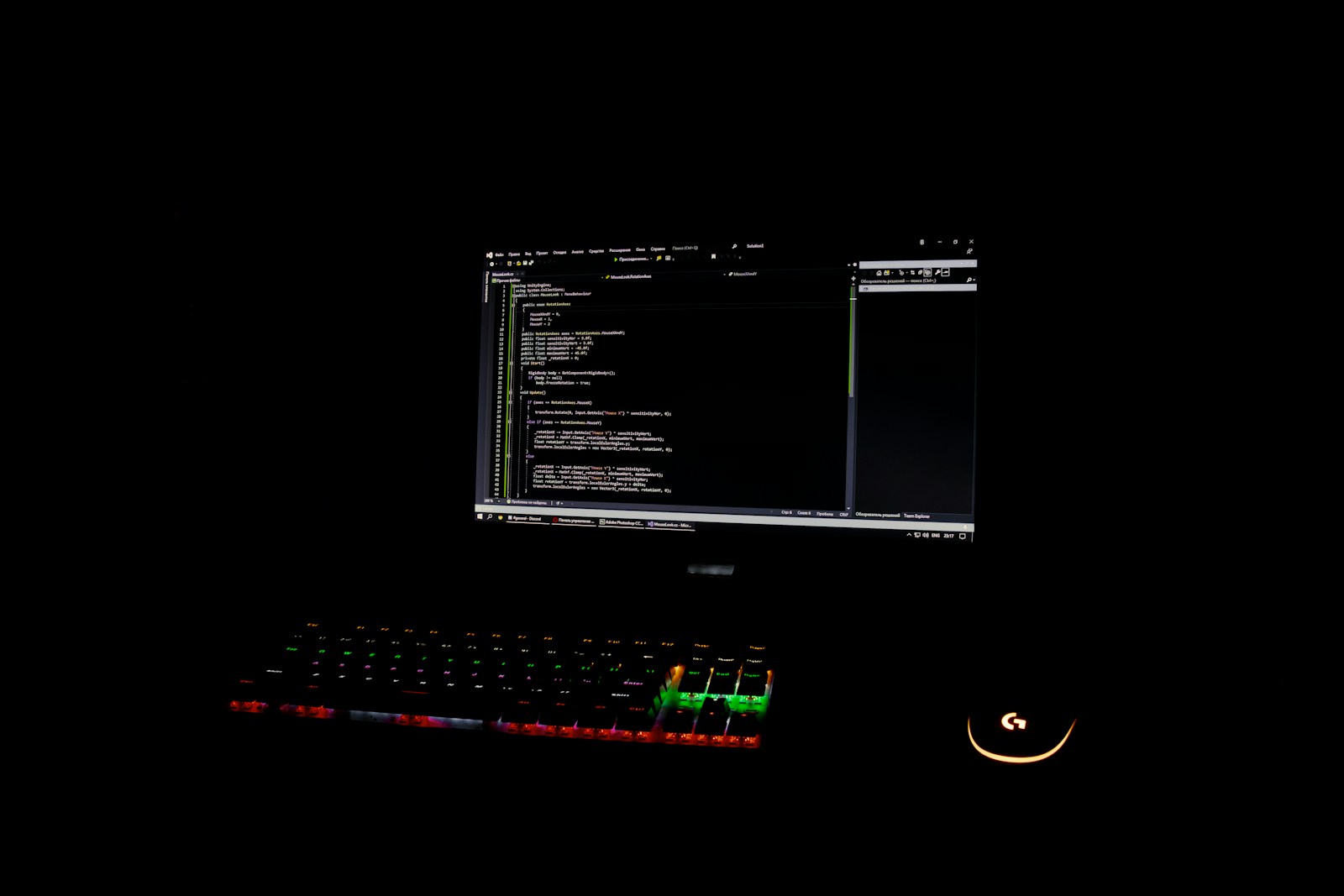Summary:
NSFW AI refers to artificial intelligence systems trained to detect, moderate, or generate explicit content. While powerful, it’s also controversial, raising questions around privacy, ethics, and content moderation. This article explores how NSFW AI works, where it’s used, and the potential impact on industries, users, and society. We’ll also look at its benefits, risks, legal considerations, and how platforms are managing this rapidly evolving tech in 2025.
Introduction: Understanding NSFW AI in 2025
NSFW AI, short for “Not Safe For Work Artificial Intelligence,” is a term used to describe machine learning systems that handle explicit, adult, or inappropriate content. Whether it’s detecting explicit material on platforms like Reddit or moderating images on content-sharing sites, NSFW AI plays a growing role in content moderation and creation.
These systems can flag, blur, block, or even generate sexual or adult-oriented material, depending on how they’re designed. With AI technology accelerating, its applications in adult content are both expanding and becoming increasingly sophisticated, making NSFW AI a topic that requires careful attention, transparency, and ethical regulation.
What Is NSFW AI?
NSFW AI is an umbrella term for algorithms and models that work with adult-themed content in one of two primary ways:
- Moderation-Based NSFW AI – Identifies and removes explicit content from websites, social media, or workplace environments.
- Generation-Based NSFW AI – Produces adult content using generative models such as diffusion, GANs, or large language models with image-generation capabilities.
These AI tools are often trained on massive datasets, which may include real or synthetic content, enabling them to identify skin exposure, sexual activity, or suggestive poses with high accuracy—or generate them based on prompts.
A Brief History of NSFW AI
The roots of NSFW AI trace back to early content moderation tools used by companies like Google and Facebook to detect nudity and violence. Over time, machine learning models became more advanced, using convolutional neural networks (CNNs) to detect nudity or flag explicit keywords.
The rise of generative AI platforms like Stable Diffusion, Midjourney, and DALL·E also brought attention to the potential of AI-generated NSFW content, which led to further innovation and concern in the space.
How NSFW AI Works
NSFW AI uses a combination of techniques:
1. Computer Vision and Image Recognition
These models analyze visual data to detect shapes, colors, and textures associated with nudity or explicit scenes. CNNs are often the go-to choice for this.
2. Natural Language Processing (NLP)
For text-based content, NSFW AI detects adult language, sexual innuendos, or solicitation attempts using NLP techniques.
3. Audio Analysis
Some tools also scan audio content for explicit words or sexual sounds, particularly on platforms that allow voice uploads or livestreams.
4. Prompt Filtering
Generative AI platforms use prompt filtering to prevent users from inputting NSFW queries or block outputs that are deemed inappropriate.
Use Cases of NSFW AI
🔹 Content Moderation on Social Media
Platforms like Reddit, Twitter/X, and TikTok use NSFW AI to automatically blur or restrict posts containing explicit images or videos.
🔹 Workplace Compliance
Enterprises deploy NSFW AI to ensure their internal communications and shared media remain professional and compliant.
🔹 AI Art Generators
Some AI art tools allow NSFW content generation in specific settings, while others ban it altogether. For instance, models like Stable Diffusion can be fine-tuned to either produce or restrict explicit visuals.
🔹 Adult Content Platforms
Certain adult entertainment platforms leverage NSFW AI to personalize user experiences or generate realistic, customizable adult imagery—though this remains highly controversial.
🔹 Parental Control Software
NSFW detection AI is also embedded in parental control applications to block access to explicit sites or content on children’s devices.
Ethical Considerations of NSFW AI
While NSFW AI offers benefits in moderation and safety, it raises serious ethical concerns:
🔸 Consent and Deepfakes
One major issue is the use of real people’s likenesses in AI-generated NSFW content without consent, often called deepfake pornography.
🔸 Dataset Transparency
Many AI models are trained on scraped internet content, which may include images of individuals who never agreed to be part of such a dataset.
🔸 Bias and Discrimination
NSFW AI can sometimes reflect racial, gender, or cultural biases—misidentifying images or over-flagging content from certain communities.
🔸 Psychological Impact
AI-generated content, especially when used inappropriately, can contribute to body image issues, distorted sexual expectations, or addiction.
Legal Landscape Around NSFW AI
✅ Laws in the United States
In 2025, the U.S. has no comprehensive federal law regulating NSFW AI, but state-level laws have begun to address deepfakes, digital likeness rights, and AI-generated adult material.
✅ Global Regulations
- EU’s AI Act: Explicit content generators may be classified as high-risk AI, requiring strict documentation and transparency.
- UK’s Online Safety Bill: Platforms are required to proactively remove harmful content, potentially using NSFW AI tools.
✅ Copyright and Ownership
Who owns AI-generated adult content? If a tool generates explicit imagery, does the user, the platform, or the AI developer hold rights? These legal gray areas are still being debated.
Benefits of NSFW AI (When Used Responsibly)
Despite the risks, NSFW AI provides several practical benefits:
- Automated Moderation – Reduces the need for human moderators exposed to disturbing or explicit content.
- Scalability – Can process thousands of posts, images, or videos in real-time.
- Privacy Filters – Used in messaging platforms to prevent unsolicited explicit images or “cyber flashing.”
- Support for Safe Platforms – Keeps communities clean and aligns with platform guidelines or workplace standards.
NSFW AI in the Creative Space
Some artists and developers argue that AI-generated NSFW content is a new form of expression. When created consensually and ethically, it’s used in:
- Comics and visual storytelling
- Erotic visual novels
- Adult-themed games
- Body positivity artwork
- Virtual reality environments
Open-source models like Unstable Diffusion emerged as a response to mainstream platforms censoring adult content, giving creators tools to explore NSFW content in private or gated spaces.
Controversies and Public Backlash
NSFW AI has been at the center of multiple controversies, including:
- Non-consensual deepfakes of celebrities
- Explicit filters in Snapchat or Instagram being abused
- AI-generated child exploitation images (which are illegal regardless of origin)
- Reddit’s struggle to contain AI porn on certain subreddits
- Schools and universities facing student-made AI-generated images
These cases highlight why regulation, consent, and ethical guidelines are critical to AI’s future in the NSFW space.
How Platforms Are Responding
📌 Stability AI
Added NSFW filters in public-facing versions of its models while allowing private forks under responsible guidelines.
📌 OpenAI
OpenAI prohibits the use of its models for generating or promoting sexually explicit content.
📌 Midjourney
Initially banned all NSFW generations and later allowed limited adult content under moderation tools.
📌 Hugging Face
Hosts open models, some of which allow NSFW generation but with explicit user warnings and community guidelines.
Tips for Responsible Use of NSFW AI
If you’re developing or using NSFW AI tools, here’s how to ensure ethical use:
- Respect Consent – Never use real individuals’ likeness without permission.
- Understand Legal Boundaries – Stay informed on laws in your jurisdiction.
- Use Gated Platforms – If you’re generating adult content, do so on platforms that are intended for that purpose and have safeguards.
- Avoid Public Sharing – Unless you have explicit rights, keep generated content private.
- Educate Users – If building a platform, educate your users on what’s ethical and what’s not.
The Future of NSFW AI
Looking forward, NSFW AI will likely become more advanced, more controversial, and more regulated. We can expect:
- Improved moderation tools with real-time detection
- More legal action against non-consensual AI content
- Clearer ethical standards across industries
- Privacy-centric models for responsible generation
- Increased demand for transparency in AI training datasets
Whether as a tool for safeguarding users or as a medium for artistic exploration, NSFW AI will remain a focal point in the global AI conversation.
Final Thoughts
NSFW AI is a powerful but double-edged innovation. It can protect users, enforce guidelines, and empower artistic expression—but it also carries serious ethical and legal risks when misused. In 2025, the conversation around NSFW AI is no longer about whether it exists but how we manage it responsibly.
As users, developers, regulators, and communities, we each play a role in ensuring NSFW AI serves humanity—not harms it.


